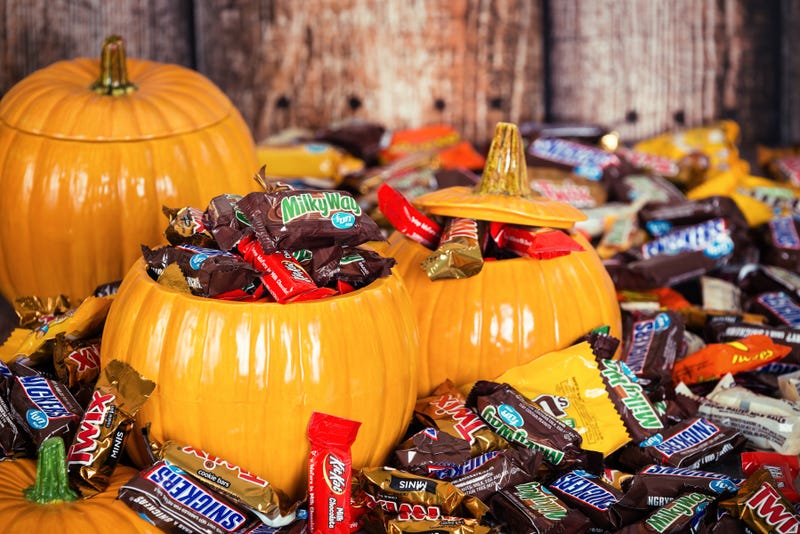
The idea that there are evil-doers lurking in the dark on Halloween with the intent of harming young children innocently trick-or-treating fits the macabre ambience of Halloween. News stories of children dying from eating poisoned candy they received trick-or-treating on Halloween night have appeared in the credible media.
The fear of children being given poisoned candy or edible items with needles or razor blades on Halloween dates back to the Industrial Revolution, but it peaked in America, in the mid-80s. I was doing a morning show on B-97 during that time, and I recall promoting that a local hospital was offering parents the opportunity to X-ray their children’s Halloween candy. At the time, I believed the concerns over the safety of Halloween candy to be real.
In 1970, The New York Times published an article that claimed “Those Halloween goodies that children collect this weekend on their round of ‘trick or trekking’ may bring them more horror than happiness” and included specific incidents of possible tampering.
Before Halloween in 1982, the tampering of Tylenol bottles in stores in Chicago hit the news. Several people died after an unknown murderer put poison in the over-the-counter medication. It made national news and added to the fear of candy tampering on Halloween.
In 1985, ABC News/Washington Post poll showed that 60% of parents at the time believed their children would be injured or killed by Halloween candy that was tampered with.
With all of the media coverage of credible reports that young children had been the victims of Halloween candy laced with poison, the fun activity of trick-or-treating was shrouded in fear. But to this day, there is no evidence of any child dying as a result of Halloween candy that had been tampered with. The Halloween candy scare was nothing but a hoax - an urban legend. So how did these stories gain so much attention in the media?
In 1959, a dentist in California, Willian Shyne, gave candy laced with laxatives to kids trick-or-treating. No harm to children was actually reported, but the dentist was charged with outrage of public decency and unlawful dispensing of drugs.
In 1964, an angry Long Island, NY woman handed out packages of items there were not for human consumption, like steel wool, dog biscuits, and ant poison, which was clearly marked “POISON.” No children were injured and the woman was prosecuted and pleaded guilty to endangering the lives of children. That same year there was a report that lye-laced bubble gum was handed out in Detroit and rat poison given out in Philadelphia, but neither story could be substantiated.
In 1970, a 5-year-old boy, Kevin Toston from Detroit, died after finding and eating his uncle’s heroin. To cover up what really happened, the family blamed the child’s death on eating poison-laced Halloween candy.
In 1974, an 8-year-old boy in Deer Park, TX died after eating cyanide-laced Pixy sticks that his father put in his pile of Halloween candy. Ronald Clark O’Bryan gave his son the poisonous candy to claim a recently purchased life insurance policy on his son.
O’Bryan was convicted and executed in 1984.
In 1978, a 2-year-old boy from Flint, Michigan died after eating Halloween candy and initial reports promoted the idea that the candy had been laced with poison, but toxicology reports revealed no evidence of poison and the child died of natural causes.
In 1990, a 7-year-old girl from Santa Monica, CA died while trick-or-treating and poison-laced candy was blamed in media reports, but the young girl died from an enlarged heart.
The media ran with the stories of children allegedly dying from tainted Halloween candy because they were compelling stories that fed into the mysterious nature of Halloween, but all of the stories proved to be false. Even with zero evidence that children had been poisoned by unknown strangers lurking in the Halloween night, media outlets ran the stories anyway.
All of the cases where children actually died were the result of an adult known to the child putting poison in the candy or natural causes. Fortunately, the media no longer reports stories of tainted Halloween candy. The media is now too busy publishing tainted stories about politics.
The fact that the media did report as fact so many stories about the evils of Halloween candy is a reminder that news is entertainment. The goal of a newspaper, website, social media platforms, broadcast and cable TV, and radio stations is to attract the largest possible audience for the purpose of generating revenue. It is a sad testament to the media that these got so much attention, but maybe it’s comforting to know that the fear of poison-laced candy or evil figures on Halloween night are just a hoax.
But never underestimate the possibility that copycats may try to use these false scenarios and bring them to life. So, inspect your kids’ Halloween candy!
*Sources: History.com and Wikipedia.
